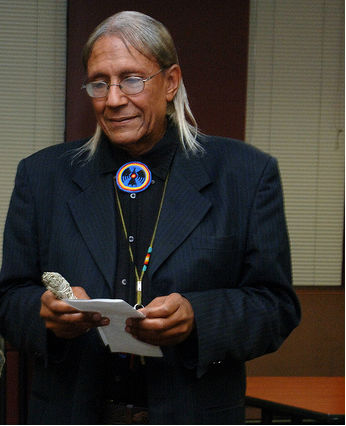
The paintings were done in prison by Leonard Peltier, 71, a Native American activist who is serving two consecutive life sentences in the deaths of two FBI agents during a 1975 standoff on the Pine Ridge Indian Reservation in South Dakota.
The works were hanging near the front doors of the state Department of Labor and Industries’ headquarters in Tumwater, Washington, and part of an exhibit to mark National American Indian Heritage Month, KING-TV in Seattle reported (http://goo.gl/ckVGrA ).
An association representing retired FBI agents demanded the state agency remove the paintings.
“He’s nothing but a thug,” said retired FBI agent Ray Lauer. “He’s an unrepentant cop killer.”
Lauer is a member of the Retired FBI Agents Association, which wrote a letter to Labor and Industries demanding the paintings be removed.
“For the state of Washington to use taxpayers’ dollars to basically offer a free art gallery to somebody who is a convicted cop killer, I find it, as a law enforcement officer, appalling and quite frankly disgusting as taxpayer also,” Lauer said.
The state agency said it will replace the paintings this week with other artwork.
Displaying the work wasn’t meant as an endorsement of Peltier’s cause, said Tim Church, a state Labor and Industries spokesman. It was simply meant to be about Native American art, he said.
“We feel badly about the impressions that they’re taking from it. We truly do. That was in no way our intent,” Church said.
Peltier’s case has been a source of protest over the decades.
His son, Chauncey Peltier, said there is no evidence his father killed anyone. He has been exhibiting his father’s paintings around the country to raise awareness about his father’s attempt to gain a presidential pardon.


